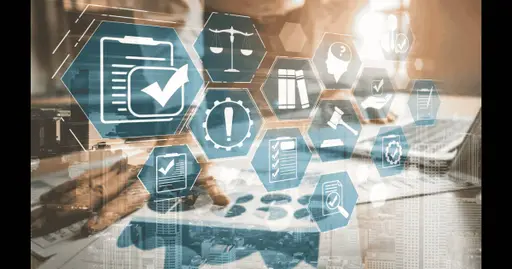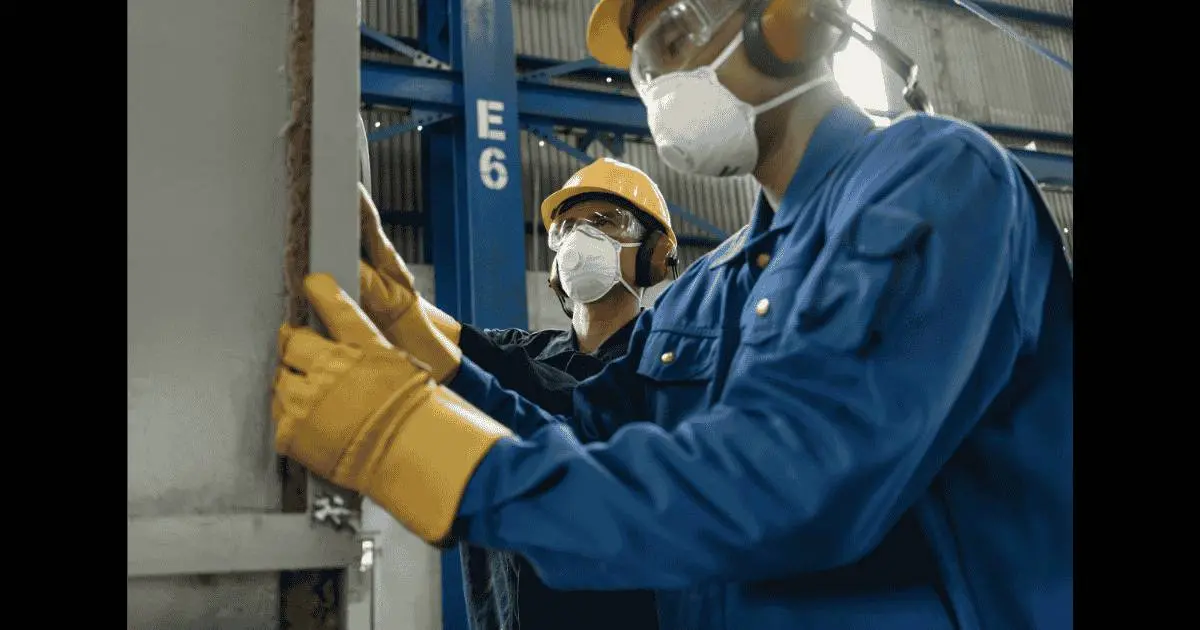In this rapidly changing corporate landscape, effective communication and team alignment are critical for increasing productivity and cultivating a cohesive team culture. One impactful strategy that successful organizations use is the pre-shift team huddle.
Whether you’re leading a startup or managing an established business, integrating the power of team huddles can transform your team into a well-coordinated force ready to tackle any challenge. These habits can instantly change your team into a well-oiled machine, ready to face any challenge that comes their way.

What is a Team Huddle?
Team huddles, also known as pre-shift meetings, daily standups, and lineups, provide an opportunity for teams to connect instantly.A team huddle is a short, typically daily meeting where team members gather to discuss goals, priorities, and important updates before starting their shifts. Unlike traditional meetings, huddles are concise and focused, usually lasting no longer than 10-15 minutes. The aim is to synchronize efforts, share information efficiently, and motivate team members for the day ahead.This ritual sets a positive tone for the day, ensuring everyone is aligned and prepared to overcome obstacles efficiently.
Benefits of Team Huddles
The benefits of implementing pre-shift team huddles are manifold:
Improved Communication:
Regular meetings ensure that all team members are consistently informed about key priorities, updates, and changes in direction. Clear and transparent communication helps in aligning everyone towards common goals. Opportunities for feedback and questions during meetings ensure that everyone understands the information being shared.
Enhanced Team Cohesion:
Meetings create a platform for team members to interact, share ideas, and collaborate. Discussing challenges and successes fosters a sense of unity and mutual support among team members. Team-building activities or discussions during meetings strengthen relationships and trust among team members.
Increased Productivity:
Meetings set clear expectations and priorities for tasks and projects. Discussing timelines, deadlines, and goals helps minimize confusion and overlapping efforts. By clarifying roles and responsibilities, meetings ensure that team members can focus their efforts on the most critical tasks.
Information Flow:
Huddles keep everyone informed about organizational updates, specials, menu changes, and other relevant information.
Quick Problem Solving:
It is a structured forum to address immediate challenges or issues as they arise. Brainstorming sessions during meetings can generate creative solutions to problems. By addressing issues promptly, meetings prevent small problems from escalating into larger ones that could affect productivity or morale.
Boosted Morale:
Recognition of achievements, milestones, and efforts during meetings boosts morale.
Encouragement and positive feedback from leaders and peers motivate team members. Discussing challenges openly and collaboratively creates a supportive environment where team members feel valued and appreciated.
Regular meetings play a crucial role in enhancing communication, fostering teamwork, clarifying goals, resolving issues, and boosting morale within a team. They create opportunities for collaboration, feedback, and recognition, ultimately contributing to overall productivity and success.
How to Prepare for Each Team Huddle
Set an Agenda
- Identify key discussion points: Establish the primary subjects that need to be covered during the huddle. This may include project updates, impediments, deadlines, new assignments, and any other relevant difficulties.
- Prioritize topics: Organize the issues in order of significance. Begin with the most pressing concerns to ensure they are addressed in case time runs short.
- Allocate time: Estimate how much time each topic will take and stick to the timetable to keep the huddle focused and efficient.
- Distribute the agenda: Share it with the team in advance so they are prepared. This helps to establish clear expectations and allows team members to gather their perspectives on the discussion issues.
Gather Information
- Collect Relevant Updates: Obtain the most recent information on ongoing projects, tasks, or any other relevant topics. This may include progress reports, status updates, or any recent modifications.
- Compile Metrics and Data: Collect required metrics and statistics to support the conversation themes. This could contain performance measurements, sales numbers, project timeframes, and other quantitative data.
- Review the previous notes: Review previous huddle notes to verify continuity and handle any outstanding issues. This is useful for tracking progress and following up on earlier action items.
- Prepare visual aids: Prepare charts, graphs, or other visual aids as needed to help the team understand key points and make the content more consumable.
Anticipate Questions:
- Consider Your Team: Imagine yourself in your teammates’ position and consider the queries they could have about the items on the schedule
- Prepare Your Responses: Write succinct, understandable responses to these probable queries. When necessary, be prepared to offer more background or clarification.
- Assemble the supporting documentation: Ensure that you own all the required documentation or resources to support your responses. Reference materials, correspondence, and reports are examples of this.
- Preparedness for Follow: Ups Be ready for any follow-up queries or conversations that may come up after you give your initial answers. The secret is to be well-prepared and flexible.
Select an Appropriate Location
- Choose Quiet Space: To guarantee that everyone can hear and participate properly, choose a place that is free of noise and distractions.
- Assure Comfort: Guarantee that each person will feel at ease in the area. This entails having enough chairs, appropriate lighting, and a setting that is favorable for conversation.
- Verify Technology: Ascertain that all required technology, such as a projector, screen, and conference call equipment, are available and operating as intended. Prior to use, test the equipment to prevent any technical issues.
- Seating: Set up the chairs so that there is easy access and conversation between people. A U-shaped or circular setup might encourage improved team member participation and communication.
- Reduce Interruptions: Decide on a time and location that will reduce interruptions. Make sure everyone on the team knows the schedule for the huddle and that the meeting location is reserved.
By following these specific actions in advance, you can make sure that every team meeting is focused, productive, and supportive of successful teamwork.
Tips for Leading Team Huddles
To make your pre-shift team huddles effective and engaging, consider the following tips:
- Keep it Brief and Focused: Stick to the agenda and avoid going off-topic.
- Encourage Participation: Invite team members to share updates or raise concerns.
- Be Positive and Motivating: Set a tone that energizes and inspires the team.
- Use Visual Aids: Display key metrics or goals to reinforce the discussion points.
- Active Participation: Encourage participation from all team members.
- Areas of improvement: Address key performance indicators and areas for improvement.
- Follow Up: Ensure that action items are clear and follow up on progress when needed.
How do you identify a successful huddle?
- A successful team Huddle starts promptly and moves quickly.
- Communication is forward-looking and concise, emphasizing opportunities and growing concerns.
- Contributions and achievements are acknowledged and honored.
- People openly and truthfully share their successes and failures.
- Questions are welcomed, and assumptions are questioned.
- Learning is emphasized, and people leave better informed and educated about the industry.
- People freely agree to assist one another in achieving success.
- There is a definite sense of accountability and follow-through.
- People depart inspired and energized.
What is the Rule for Huddles?
- Use a dedicated facilitator
- Keep it short
- Focus on How part
- Engage everyone
Incorporating pre-shift team huddles into your daily routine can significantly enhance your team’s performance and overall work environment. By creating a clear communication, goal alignment, and camaraderie, huddles empower teams to tackle challenges confidently and achieve greater success together. Pre-shift huddles are more than just meetings—they’re opportunities to strengthen your team and enhance overall performance!
FAQs
What to Say in a Team Huddle?
Focus on goals, priorities, and any updates relevant to the team’s activities.
What is the Difference Between a Meeting and a Huddle?
Meetings are typically longer and cover broader topics, whereas huddles are short, focused, and daily.
What is the Team Huddle Format?
Typically involves a quick round of updates, followed by discussion on key priorities and issues.
How Long Should a Team Huddle Last?
A team huddle should generally last between 10 to 15 minutes. The goal is to keep it brief and focused to maximize efficiency without taking up too much of the team’s time.
How Often Should Team Huddles Be Held?
Team huddles are typically held daily, especially in fast-paced environments. However, the frequency can vary depending on the team’s needs and the nature of the projects.
Who Should Lead the Team Huddle?
The team leader or manager usually leads the huddle, but it can be beneficial to rotate the responsibility among team members to foster engagement and leadership skills.
What Should Be Included in the Team Huddle Agenda?
The agenda should include a review of progress on current tasks, discussion of any obstacles or challenges, alignment on priorities for the day, and any urgent updates or announcements.
How Can We Ensure Active Participation in Team Huddles?
Encourage all team members to share updates, ask questions, and provide input. Creating a safe and open environment where everyone feels comfortable speaking up is crucial.
What Are Some Best Practices for Conducting Effective Team Huddles?
Best practices include starting on time, keeping the discussion focused, encouraging participation, using visual aids to support key points, and summarizing action items at the end.
How Can We Measure the Effectiveness of Team Huddles?
Measure effectiveness by evaluating team alignment, progress towards goals, the resolution of issues, and overall team morale. Regular feedback from team members can also provide insights into the huddle’s effectiveness.11.
Can Remote Teams Have Effective Huddle?
Yes, remote teams can have effective huddle using video conferencing tools. Ensuring everyone has access to the necessary technology and fostering an inclusive environment are key.
What Should We Do If a Team Member Misses a Huddle?
If a team member misses a huddle, ensure they receive a summary of what was discussed, including any action items or important updates. This can be shared via email or a team collaboration tool.
How Can We Handle Off-Topic Discussions During a Huddle?
Politely steer the conversation back to the agenda. If an off-topic issue is important, note it down and address it separately after the huddle or in a different meeting.
Related Posts

25 April, 2025

25 April, 2025


